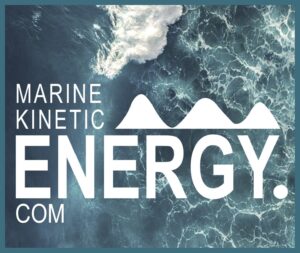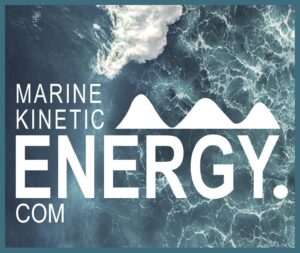We live in a fast-moving world that is at a crucial junction in time. There are so many issues that people are facing across the world, whether in the form of the Covid-19 pandemic, climate changes, and rapid usage of natural resources amid growing energy demands.
Why the Need of Marine Kinetic Energy?
The population of the world is increasing, and it is directly impacting the natural energy resources. Over the past few decades, significant research has been done on exploiting the alternative forms of renewable resources. We all use river water, sun, and wind to produce energy, but one resource covering 75% of the earth and few have thought about is the ‘ocean and sea water.’
Just like river water is used in hydroelectricity. Similarly, the movement of ocean waves and currents can be converted into marine kinetic energy that can power our homes, buildings, industries, and cities.
The energy stored in the moving water is called ‘kinetic energy.’ Scientists and engineers across the world are developing methods to make use of clean, renewable ocean water using marine and hydrokinetic energy technologies.
One of the common sights you may see yourself while on the beach or on television is waves coming every few seconds and crashing on the shore. The water currents are a natural phenomenon that occurs naturally worldwide. The usual tidal currents ebb and flow, and the large currents push large volumes of water across the oceans.
By employing certain technology and techniques, we can use marine water to generate electricity and meet the impending energy crisis. According to research, the tides and waves occurring along the US coastal areas are more than enough to satisfy the country’s power needs.
The bigger question is how does it all work.
It all depends on the type of hydrokinetic energy systems that will be used. However, the basic concept remains the same that is using or extracting the force or energy of moving water. One simple example is the use of a buoy that can capture energy with the movement (rise and fall of ocean waves that includes the vertical rise, back and forth, and side to side movements).
Also, as the ocean currents and tides are in constant motion, these can easily spin the turbines as the water moves through the ocean power device that will generate electricity. The US Energy Department focuses its resources on developing a wide range of turbines that can convert energy from ocean tides, waves, and currents into electricity.
The Challenges and Advantages of using Marine Energy
Putting up a solar panel on a rooftop is quite easy. However, there are a whole lot of challenges to developing and installing devices due to the tremendous amount of turbulent and harsh ocean conditions. The marine and hydrokinetic energy systems must be built to withstand the pressure of strong currents and impacts from the debris carried along with the movement of water.
Another challenge is designing the system that does not impact the aquatic wildlife and marine environment.
The biggest advantage of developing marine and hydrokinetic energy is that the water resources are close to the coastal cities where more than half of the country’s population lives. The potential for maximum use of marine energy is along the coastal locations, while some cities can take advantage of tidal currents.
The extensive advancements in technology have led to innovative and sustainable power plants. The purpose and goal are to accommodate the ever-increasing demand for electricity. There are other alternative energy resources, such as combustible fossil fuels but it is one of the leading reasons for releasing greenhouse gases into the atmosphere.
Renewable resources include sunlight, wind, waves, rain, thermal, and biomass. The biggest advantage of renewable resource is that it is a clean form of energy and comes from naturally occurring sources and processes. The natural resources such as ocean water are virtually infinite, and their use will not negatively impact the environment or add to the drastic climate change.
Marine Kinetic Energy is one firm developing cutting-edge technology such as the PSI (Pounds per Square Inch) generated renewable power plant. The goal is to produce and distribute clean and efficient energy. The company is currently working on three design principles that include
- Deepwater systems using ocean depth PSI to generate electricity
- Shallow water energy generation
- Advanced mobile hydro devices with improved EROI (Energy Return of Investment)
The best advantage of this modern marine kinetic technology is that it can be deployed in various locations such as shallow water and deep oceans. Marine energy includes using water from the seas and oceans to generate electricity.
Bottom Line
Nearly all the popular methods of renewable energy solutions are already practiced and giving significant results. However, marine and hydrokinetic energy is a fabulous new addition as a clean, renewable, and cost-effective means to fulfill the growing energy demands.
The water in the oceans all across the world is always in motion, and the waves crash the coastlines, sometimes strong and sometimes not. Marine energy is the next big thing in the renewable energy sector, and it is always available and free of charge.

